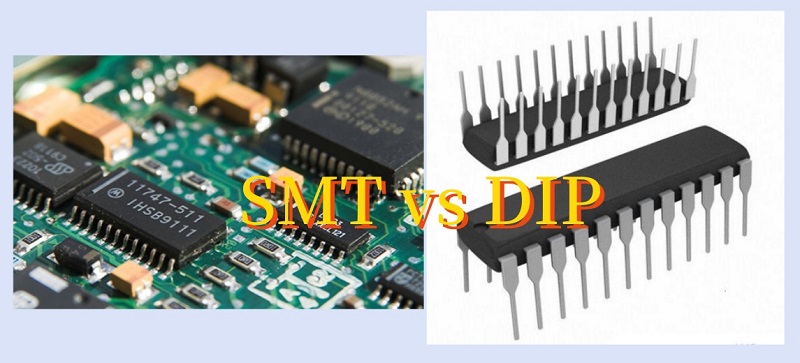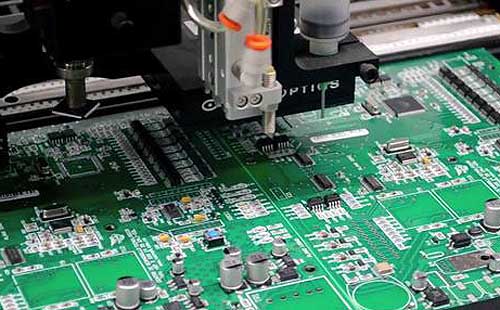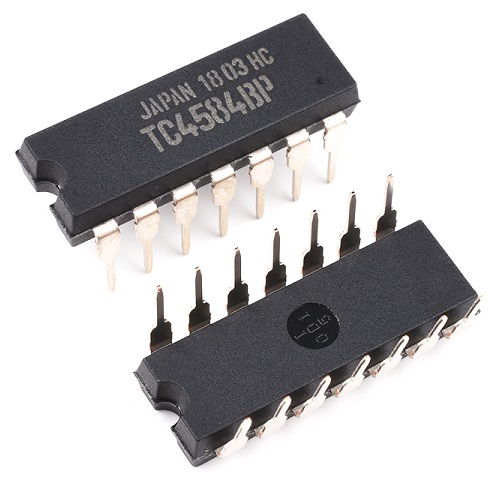
The two most common methods of soldering components are SMT and DIP. Each has its advantages and disadvantages. The specific application scenario will determine the choice.
SMT is surface mounting. It is small, lightweight, highly precise, and reliable.
It is used widely in automobiles, computers, and communications.
DIP refers to a deep-insertion DIP package . It is a method of packaging electronic components.
The printed circuit board is assembled and connected by inserting the larger electronic components on the printed board. DIP packages are popular because of their high volume, reliability and low price.
It is used widely in audio, video and communication fields.
SMT and DIP both have advantages and disadvantages. The choice of method depends on the application and its requirements.
SMT or DIP? How Do You Choose the Packaging for Electronic Components?
How can we select the best packaging in today's technological world?
SMT: Small Efficient Modern
It is a newer packaging method for electronic components. The main feature of SMT is that it allows components to be soldered directly onto the PCB surface without needing holes for connections. This is why it is sometimes called "holeless mounting."

SMT parts are smaller than traditional DIP components because they don't require pins. This makes SMT packaging ideal for electronic devices that require high integration and minimization, like smartphones, tablets and portable devices.
The SMT technology also provides a higher assembly density. This allows for more components to be incorporated into a PCB with limited space.
SMT can increase production efficiency. SMT components are mounted quickly and precisely by automation equipment. This increases the production rate of SMT lines, reducing costs.
This is especially important for electronics with high production volumes.
The soldering of SMT components has a higher. Soldering under controlled conditions results in more reliable contact points and uniformity, which reduces the possibility of soldering defects. It increases the durability and reliability of the product.
SMT packaging has also better high-frequency characteristics, and is therefore suitable for high-speed transmission of electronic signals. SMT is therefore a great choice for high-performance electronics, computer motherboards and communications.
SMT has its own limitations. SMT components are not suitable for electronic devices that require frequent upgrades or replacements because they're soldered onto the PCB.
SMT soldering is a process that requires specialized equipment and production processes. This can increase the cost of initial investment. Finaly, SMT-packaged components are more sensitive to environmental and thermal factors.
Consequently, applications that are exposed to extreme temperatures or harsh conditions may need additional protection.
DIP: Traditional, Stable, and Maintainable
DIP is an old-fashioned method of packaging electronic components. The pins of the component are soldered on the opposite side of the PCB. This packaging method continues to be widely used for many high-quality and traditional applications.

DIP components require pins for attachment to the PCB. DIP is a good choice for electronic devices that require high power and current, as the pins are better able to handle both heat and current.
DIP components are also easier to install by hand due to their pins. They have certain advantages for PCB prototyping, small-batch manufacturing, and PCB prototypes.
Second, components with DIP pins are more stable as their pins are more securely attached to the PCB. This makes them more durable in environments with shock and vibration and is suitable for industrial and military applications.
DIP packages are also more heat resistant, and suitable for high-temperature applications. The pins of these components can dissipate more heat than the PCB and reduce thermal stress.
DIPs have some disadvantages. Their package size is large, and does not apply to miniature devices. Manual installation and repairs may also increase production costs.
DIP components are not as good as SMT components for high-frequency applications due to the layout and length of the pins.
What Is the Difference Between DIP and SMT?
The choice of SMT or DIPP packaging is determined by your application. Consider these factors:
Type of Application
If you need a product with high power, stability, and easy maintenance, DIP may be a better choice. DIP is a better choice if your product needs to be high-power, stable, and maintainable.
Production Scale
If you need to produce large quantities of your product, SMT will be more cost-effective. If you need only small quantities or prototype circuit boards, DIP is a better option for manual assembly.
Environmental Conditions
Take into account the environment in which your product will be used. DIPs may be a better choice if your device is exposed to high temperatures, vibration or humidity.
Additional protection may be required for SMT components to adapt to harsh conditions.
Cost and Design Cycle
DIP is a good choice if you want to quickly prototype and manufacture at low cost, as it doesn't require any special SMT equipment or processes.
In the long term, SMT production efficiency and miniaturization could save even more money.
Technology Trends
SMT packaging has grown in popularity and support with the advancement of technology. You choose SMT if you want to keep up with the latest technology trends.
Maintenance Costs
DIP's manual repair advantages may be greater if your product is subject to frequent upgrades or component replacements.
Then How to Choose?
Choosing between DIP or SMT packaging is a complex decision that should take into account many factors.
Mixing SMT components with DIP is sometimes a good option, as it allows you to take full advantage of their respective benefits.
To conclude SMT and DIP are two different methods of electronic component packaging, each with its own advantages and limitations.
You can select SMT or DI based on factors such as production efficiency, costs, scenarios of application, etc.
You can also take into account the specific requirements of your application, production scale and environmental conditions.
Select SMT when electronic products need large integrated circuits or high-density connections.
DIP technology is a good choice for electronic products that require miniaturized parts to be installed and connected.
Be flexible in your decisions, and be aware of industry trends.









